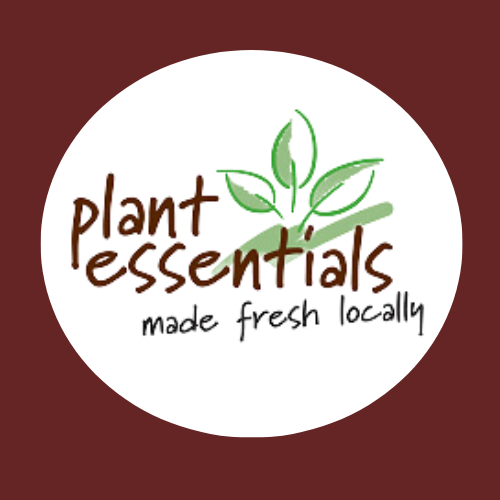GLOSSARY OF ACTIONS
From time to time you may read about an essential oil and see an action listed. Sometimes the meaning seems clear enough, sometimes not so much. The following list may assist you.
- Abortifacient. Abortion inducing. Causes childbirth or premature labour.
- Adaptogen. Increases the body’s ability to handle stress.
- Aerophagy. A build-up of air in the body that is relieved through burping or flatulence.
- Alterative. Produces a gradual improvement in the nutritional state of the body.
- Analgesic/Anodyne. Relieves or reduces pain.
- Anaphrodisiac. Reduces sexual desire.
- Anesthetic. Numbs the nerves and causes a loss of sensation.
- Anthelmintic. Expels or kills intestinal worms.
- Antibacterial. Prevents the growth of and kills bacteria.
- Anti-catarrhal. Helps the body remove excess catarrhal build up
- Anticoagulant. Prevents clotting of the blood.
- Antidepressant. Alleviates or prevents depression.
- Antidiarrhoeic. Relieves diarrhoea.
- Antidote. A remedy to counteract a poison.
- Antiemetic. Counteracts nausea and stops vomiting.
- Antifungal. Kills fungal infections.
- Antigalactagogue. Lessens production of milk secretion of nursing mothers.
- Anti-inflammatory. Reduces inflammation.
- Antibilious. Helps the body to remove excess bile and can aid in biliary & jaundice conditions
- Antilithic. Prevents formation of stones or calculus.
- Antimicrobial. Inhibits the growth of micro-organisms.
- Antimutagenic. Ability to protect against effects of a mutagenic substance.
- Antineuralgic. Stops nerve pain.
- Antipyretic. See Febrifuge
- Antiphlogistic. Counteracts, reduces, or prevents inflammation.
- Antipruritic. Relieves or prevents itching.
- Antiputrid. Stops putrefaction.
- Antisclerotic. Removes deposits from circulatory vessels and the body.
- Antiscorbutic. Preventative for scurvy.
- Antiseptic. Inhibits the growth of and kills bacteria.
- Antispasmodic. Relieves or prevents spasms, cramps, and convulsions.
- Antisudorific. Stops perspiration.
- Antitoxic. Counteracts poisons.
- Antitussive. Relieves coughs.
- Antiviral. Weakens and kills viruses.
- Aperient. A gentle purgative of the bowels.
- Aperitif. An alcoholic drink taken to stimulate the appetite before a meal.
- Aperitive. Stimulates the appetite.
- Aphrodisiac. Arouses sexual desires.
- Astringent. Contracts tissue and reduces secretions.
- Balsamic. Softens phlegm.
- Bronchodilator. Dilates the spastic bronchial tube.
- Calmative. Mild sedative or tranquilizer.
- Cardiac. Stimulates or affects the heart.
- Cardiotonic. Tones the heart muscle.
- Carminative. Expels gas from the intestines.
- Caustic. Can damage skin tissue through chemical action.
- Cephalic. Problems relating to the head.
- Cholagogue. Increases the flow of bile.
- Choleretic. Stimulates the production of bile.
- Cicatrizant. Helps the formation of scar tissue; healing.
- Coagulant. Clots the blood. Cordial. Stimulant and tonic.
- Counterirritant. An irritant used to counteract irritation or inflammation in another part of the body.
- Cytophylactic. Protects the cells of the organism.
- Decongestant. Relieves congestion.
- Demulcent. Soothes irritated tissue, particularly mucous membranes.
- Deodorant. Deodorizer. Eliminates offensive odors.
- Depurative. Cleanses and purifies the blood and internal organs.
- Detersive. Detergent. Cleanses wounds and sores, and promotes the formation of scar tissue.
- Diaphoretic. Causes perspiration.
- Digestive. Promotes and aids digestion.
- Disinfectant. Kills infections and disease-producing micro-organisms.
- Diuretic. Increases the secretion and elimination of urine.
- Emetic. Induces vomiting.
- Emmenagogue. Promotes and regulates menstruation.
- Emollient. Softens the skin and soothes inflamed and irritated tissues.
- Estrogenic. Similar to estrogen.
- Euphoriant. Brings on an exaggerated sense of physical and emotional well-being.
-
Expectorant. Promotes the discharge of mucous from the lungs and bronchial tubes.
-
Febrifuge/Antipyretic. Reduces or prevents fevers.
- Fixative. Holds the scent of a fragrance.
- Galactagogue. Promotes or increases the secretion of milk in nursing mothers.
- Germicide. Kills germs. Hallucinogen. Induces hallucinations—an imagined or false sense of perception.
- Hallucinogen. Induces hallucinations – an imagined or false sense of perception.
- Hemostatic.Stops hemorrhaging.
- Haematinic Increases hemoglobin levels
- Hematogenic Helps in formation of red blood cells
- Hepatic. Acts on the liver.
- Hepatoprotective. An agent that protects the liver.
- Hypertensor. Raises the blood pressure.
- Hypnotic. Induces sleep.
- Hyoglycemient. Lowers blood sugar levels.
- Hypotensor. Lowers the blood pressure.
- Immunostimulant Stimulates the immune system.
- Intoxicant. An intoxicating substance.
- Insect Repellent. Repels insects.
- Insecticide. Kills insects.
- Larvicide. Kills the larvae of insects.
- Laxative. Promotes the evacuation of the bowels; a mild purgative.
- Mucilage Contains gelatinous constituents & will often be demulcent & emollient.
- Narcotic. Relieves pain and induces a deep state of sleep. Large amounts can cause a feeling of stupor or coma.
- Nervine. Calming and soothing to the nervous system.
- Oxytocic Stimulates the contraction of the uterus & can help childbirth.
- Parasiticide. Kills parasites, especially those living on or in the skin.
- Parturient. Facilitates labour and childbirth.
- Pectoral. Having an effect on the respiratory system.
- Purgative. Promotes a vigorous evacuation of the bowels.
- Refrigerant. Cools and lowers the body temperature.
- Regenerator. Promotes new growth or repair of structures or tissues lost by disease or injury.
- Rejuvenator. To make young again and bring back a youthful appearance.
- Relaxant. Lessens or reduces tension, and produces relaxation.
- Resolvent. Disperses swellings.
- Restorative. Restores consciousness and/or normal physiological activity.
- Rubefacient. A local irritant that reddens the skin.
- Sedative. Calms anxiety and promotes drowsiness.
- Sialagogue. Stimulates the generation of saliva from the salivary glands.
- Soporific. Induces sleep, compare “hypnotic”
- Stimulant. Excites or quickens an activity in the body.
- Stomachic. Strengthens, stimulates, and tones the stomach.
- Styptic. Reduces or stops external bleeding by contracting the blood vessels.
- Sudorific. Promotes or increases perspiration.
- Tonic. Strengthens and invigorates the entire body or specific organs.
- Tranquilizer. Calms the nerves and brings on a state of peacefulness without inducing sleep.
- Vasoconstrictor. Constricts the blood vessels, which raises the blood pressure.
- Vasodilator. Dilates the blood vessels.
- Vermifuge. Expels intestinal worms.
- Vulnerary. Heals wounds and sores by external application.
- Choosing a selection results in a full page refresh.

